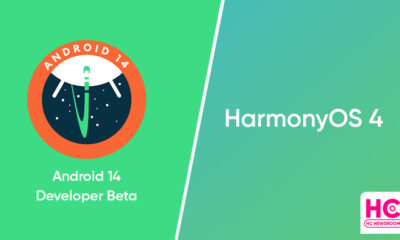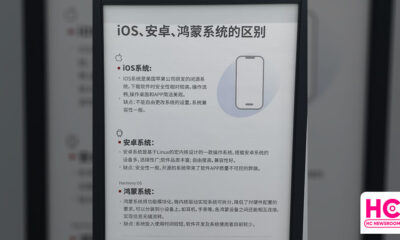Android
Android 14 will force devices to support modern AV1 video coding
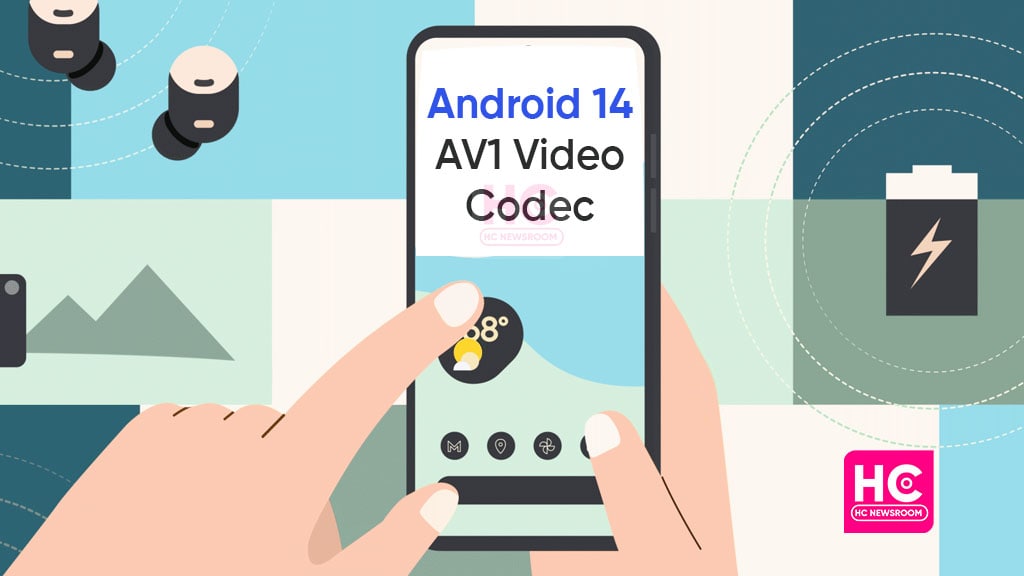
Android 13 is still relying on the top of the news section. However, Google has started lifting its hammer for a new and game-changing system. Yes, we are talking about the upcoming Android 14 that has some new tweaks regarding the AV1 video coding.
According to the latest information, the US manufacturer has made the support of AV1 video coding format mandatory for Android 14 devices. As a result, if the manufacturers want to fetch the latest version of Android to their smart gadgets then they must add the support of the AV1 codec in their internal system.
What is the AV1 codec?
After the satellite connectivity feature, Android 14 is now covering the AV1 codec topic. Generally, this is an open, and license-free video coding format. It is mainly used for video transmission and compression purposes.
Besides, AV1 is a modern and improved compression system that is quite efficient at work. It consumes fewer data and energy without affecting or reducing the video quality. In the latest edition, this code is available in the Android Open Source Project Gerrit. It reads:
“As per Android CDD (Compatibility Definition Document) 14, section 2.2.2 and section 2.6, handheld and tablet device implementations must support decoding AV1.”
Consequently, this makes clear that those devices that are eagerly waiting for the Android 14 interface need some amendments in their system. Only then they would be able to gain the enjoyable and thoughtful benefits of the upcoming software.
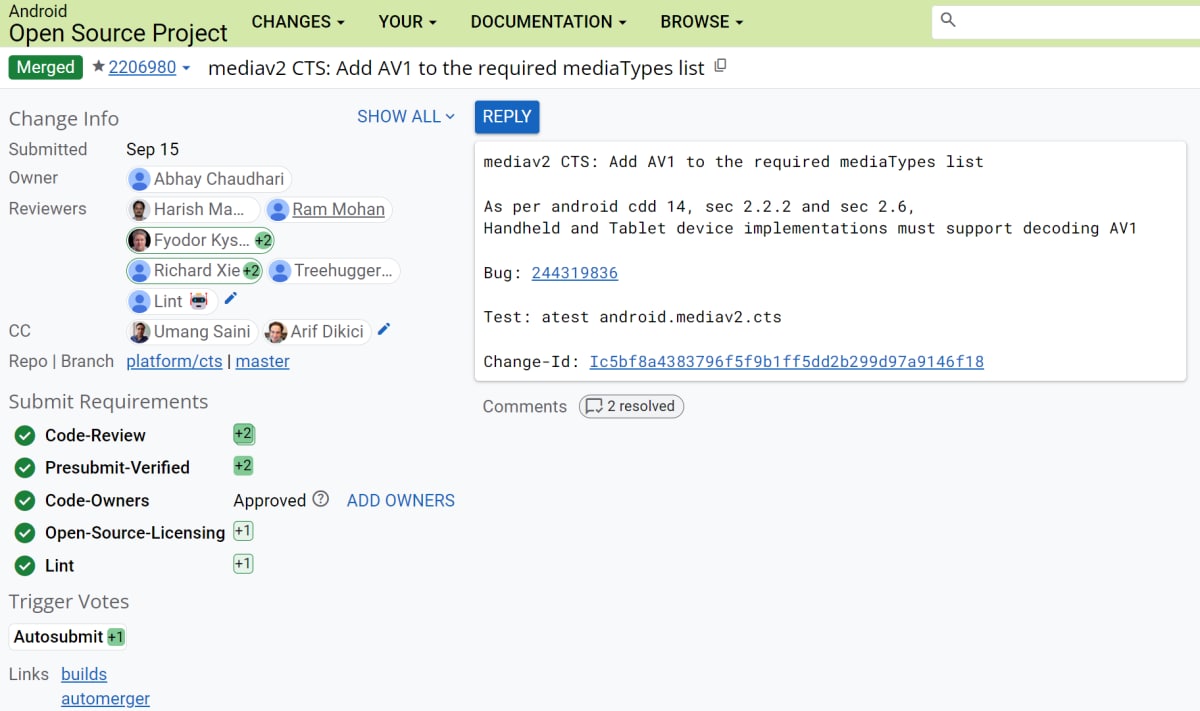
64-bit change!
Another significant change that Android 14 will bring to its surface is 64-bit-apps. As per the reports, those smart gadgets that stand over the Armv9 CPU architecture can only support the 64-bit-apps. This major change is for all those latest processors that equip the Armv9 framework. For instance, Snapdragon 8 Gen 1 chipset.
This makes a sense of finally marking a full stop at the 32-bit-only applications. So far, Apple has taken this decision in 2017, and following the lead, Google is next.
Apart from these major pinches, the predictive back gesture also came into the limelight and is rumored to make its way in Android 14. The respective feature made its debut in Android 13 and there are chances to catch it once again with the upcoming version.
However, we still need some time to bring everything in sequence. Let’s see what else Google is planning to bring to the Android 14 platform.

|| Source ||
Android
First Android 14 Developer Beta announced, launch around HarmonyOS 4

Android 14 is the next software version for the Android ecosystem. On February 8, Google stepped ahead to begin the development of this major upgrade with the first developer beta.
Google has released the roadmap for the development, beta testing, platform stability, and the final release of Android 14, which reveals meet the launch of Huawei HarmonyOS 4 later in the second half of 2023.
The first developer preview is already out for the Pixel devices. However, Google could open early access to other smartphone makers such as OnePlus by April when the open beta campaign kicks off.
As mentioned by the Android company, Android 14 is projected to reach platform stability by the end of July. But there’s still a possibility of these milestone timelines to delay, similar to last year.

For your information, the Android 14 developer preview will be a very useful and early gift to the developer community. It will pave a way for the app devs to know more about the upcoming APIs and app features ahead of the final launch.
Looking into the developer preview features, Android 14 promises to improve productivity, enhances performance, improvements to security, and privacy, and bring new customizations.
Yes, there are new tweaks and changes made over Android 12, while there are more that will be visible as the development progress further. Throughout this phase, these developers (and later users) will help to fix bugs and make improvements to the Android 14 source code.
HarmonyOS 4:
Aside from the Android 14 developer beta, Huawei is preparing for the HarmonyOS 3.1 rollout but the company is working on HarmonyOS 4 as a major release for the next generation of Huawei devices. For now, there’s no official launch date available but we are likely to hear more on this at the Huawei Developer Conference (HDC) 2023 event.
HarmonyOS 4 promises big upgrades over HarmonyOS 3 and a major restructure in the user interface (UI). Nonetheless, we’ll keep you posted.

(source – Android)
Android
Despite being an Android babyface, Samsung failed to understand dynamic theme in 2022
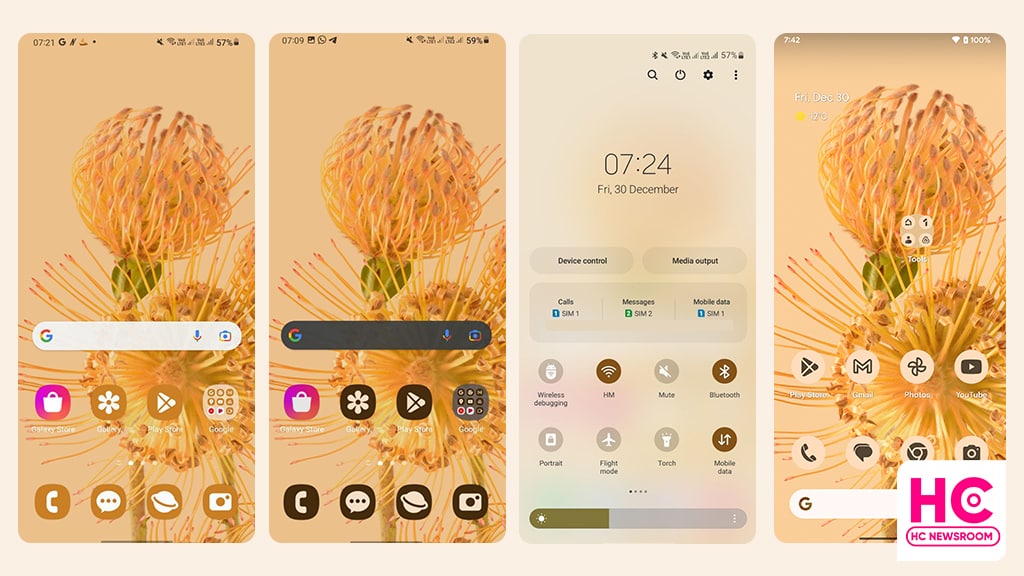
2022 is the year of Android 13 and Android phone makers spotted sending this software update with improved dynamic theme options, but as a babyface, it seems like Samsung still has not learned the core concepts of the dynamic theme.
Introduced with Android 12, the Material You powered dyanamic theme brings brand new settings to tweak the user interface. Instead of being just a feature, the dynamic theme became a part of Android’s soul. With Android 13, Google further polished the dynamic theme so it could be adapted to all Android devices.
Dynamic Theme (Simple version): Once you apply a new wallpaper, the phone generates a range of colors based on that wallpaper. The set of colors is called a color palette and it is then applied throughout the user interface.
Following the decline of Huawei, Samsung is enjoying unlimited Android prowess. It’s projected as a major Android promoter and a babyface. And why not? After all, the South Korean phone maker keeps on posting new mobile shipment records.
However, the handling of the dynamic theme in One UI 5 (which is based on Android 13) shows that Samsung wasn’t serious about being an Android babyface in 2022.
You may want to know, how I reached this conclusion and why Samsung is a failure when it comes to precise work. Let’s find out together.
Appearance:
The user interface is all about appearance, and so does the dynamic theme. Using the dynamic theme on Samsung One UI 5 is different from stock Android 13.
Note: I’ve used the same pixel wallpaper on both Samsung and Pixel devices. So, we can keep the comparison on the same level.
Home Screen:
Below is the home screen, which looks as usual on both One UI 5 and stock Android 13.
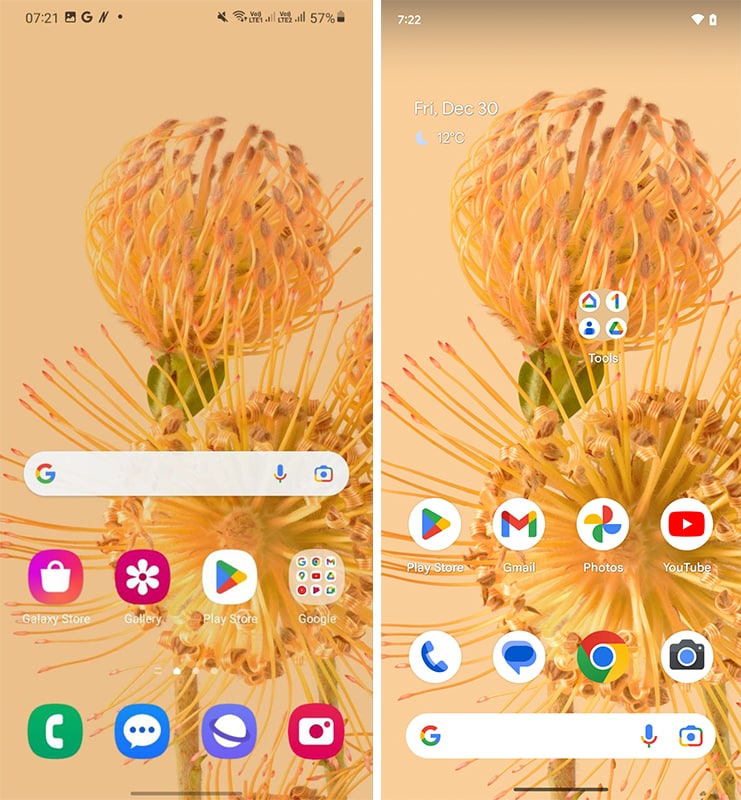
Quick Settings:
Both of the quick settings are using Material You in elements, such as quick access icons and sliders. However, the background on stock Android 13 is solid and remains black. On the other hand, Samsung uses a translucent background in the quick settings, which has not changed even with the Android 13. It is Samsung’s way of implementing features. While in some scenarios, this way obstructs the viewing experience.
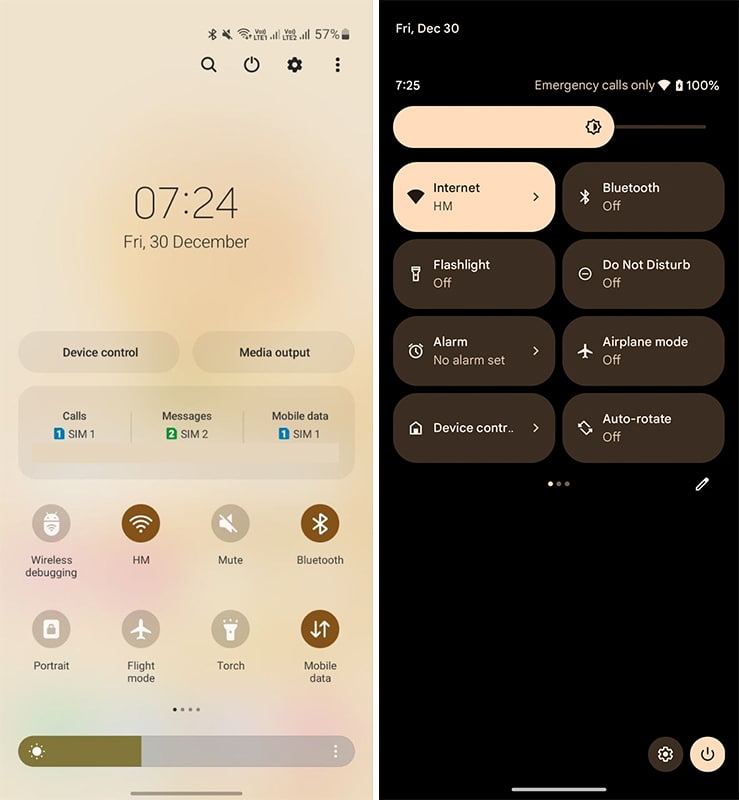
For example, the translucent background is now reflecting the colors of the app opened in the background. It also compromises the look and feel of the quick settings icons and the whole quick settings UI. But it becomes subtle when used on top of the Settings menu.
Below you can check the example of the quick settings opened over the following screens.
(Left – on top of home screen wallpaper, on top of Play Store, on top of Settings menu).
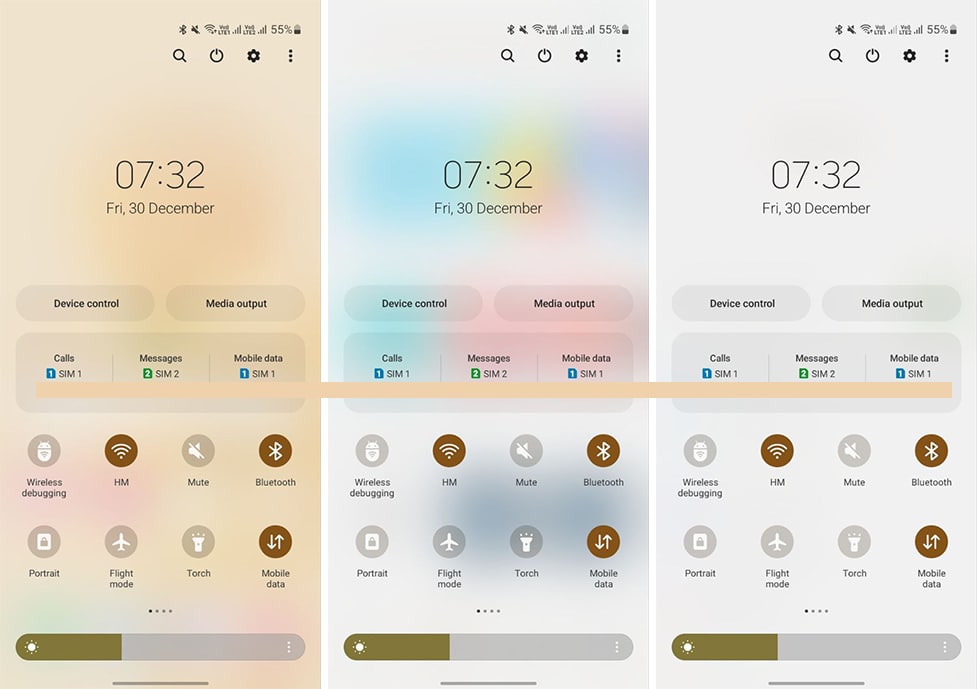
Settings:
The setting is an important part of UI, which we access at least once a day. The layout, font, and elements are different in these two softwares. But Samsung used a slight proportion of the color palette in the Settings’ background and remain neutral for applying to the rest of the user interface.
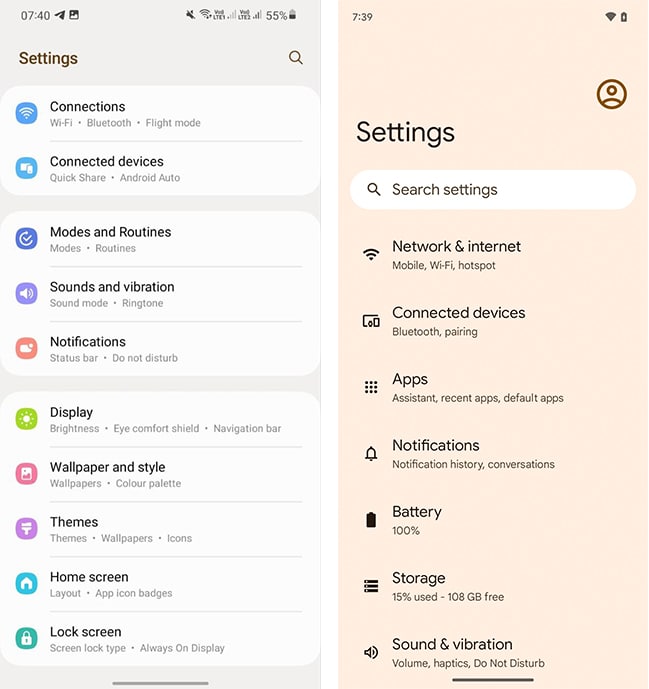
Themed Icons:
I love themed icons because it brings a new look to the app icons. However, Samsung’s way of doing things is a little more disappointing than what it actually looks.
Below you can check Samsung One UI icons painted with color pallets alongside stock android icons. The use and management of contrast in the background and tint on the shape (size too) are super lazy on One UI app icons.
On the flip side, stock Android gets these things done in the best way possible.
![]()
There’s further inspection on this available, apply Dark Mode and see the change.
![]()
Verdict:
We don’t need to explain the results. But It is certainly not nice to implement the dynamic theme for the Android babyface Samsung in 2022.
What could’ve happened?
If possible, Samsung should’ve to blend more into the material rather than bleed into the material. Improve icons, and check visibility levels of the UI elements and the current issues may resolve to an extent.
Android
MagicOS 7/Android 13 beta rolling out for Honor phones
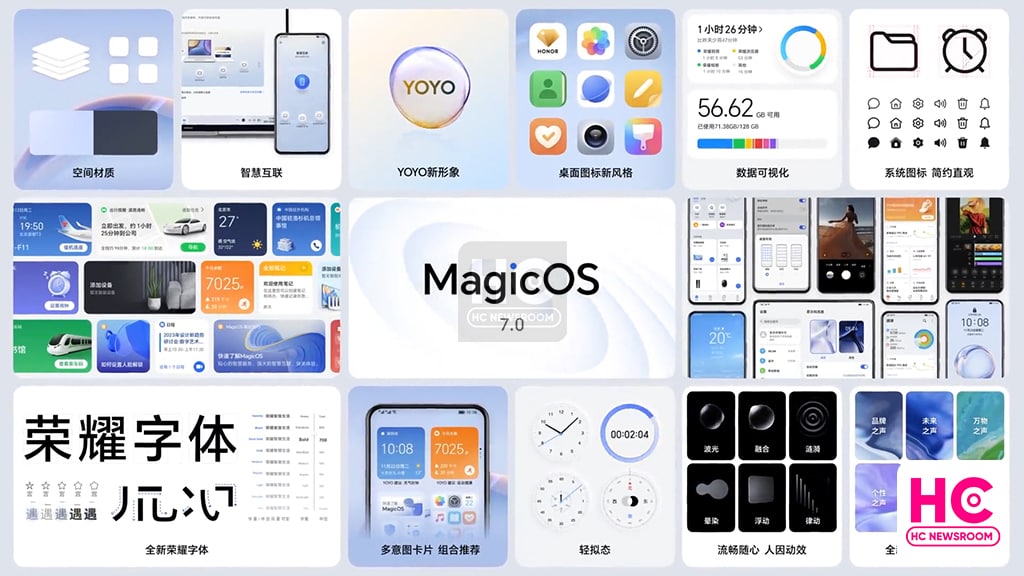
Last month, Honor announced Android 13 based MagicOS 7 and its beta is now rolling out for several models. The rollout is confirmed on various models mentioned in the official roadmap.
According to the information, Honor MagicOS 7 is released for closed beta testers and selected participants will move to public beta in the next phase. After completing the beta test, Honor will send stable MagicOS 7.
Let’s look into the models and their corresponding Honor MagicOS 7/Android 13 beta versions:
Honor Magic V:
The phone is receiving MagicOS 7.0.0.101 upgrading from Magic UI 6.0.0.185.
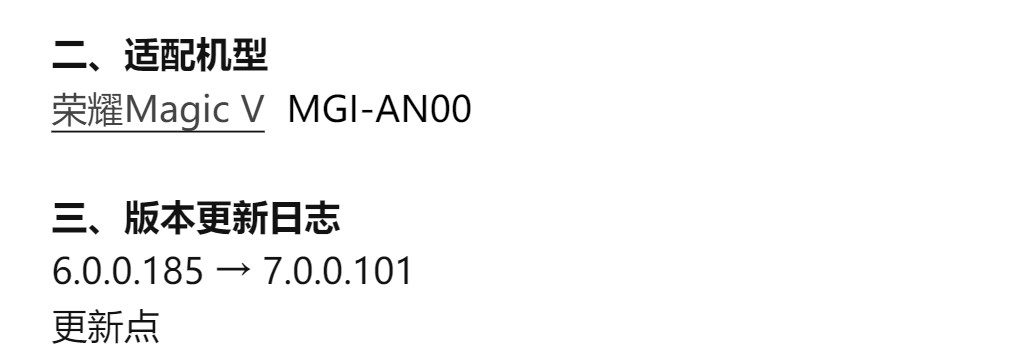
Honor Magic 3 Series:
Honor Magic 3, Magic 3 Pro, and Magic 3 Supreme Edition are receiving MagicOS 7.0.0.107 upgrading from Magic UI 6.0.0.139.
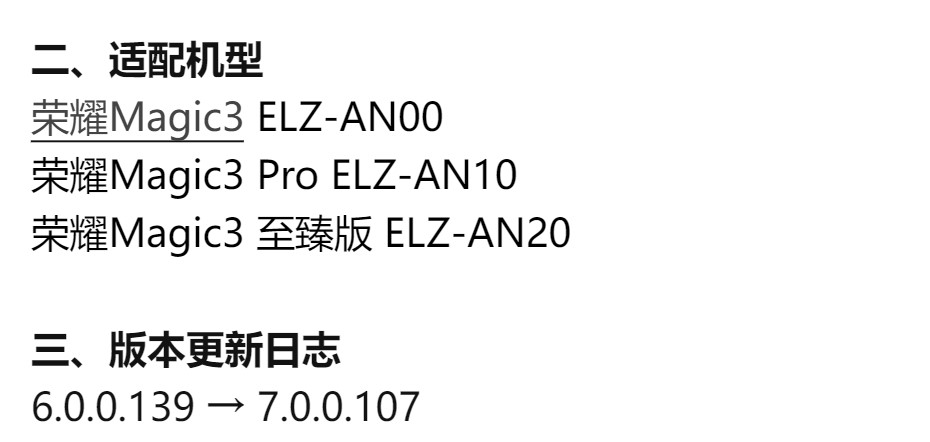
Honor Magic 4 Series:
Honor Magic 4, Magic 4 Pro, and Magic 4 Supreme Edition getting MagicOS 7 version 7.0.0.108 version upgrading from Magic UI 6.0.0.178.
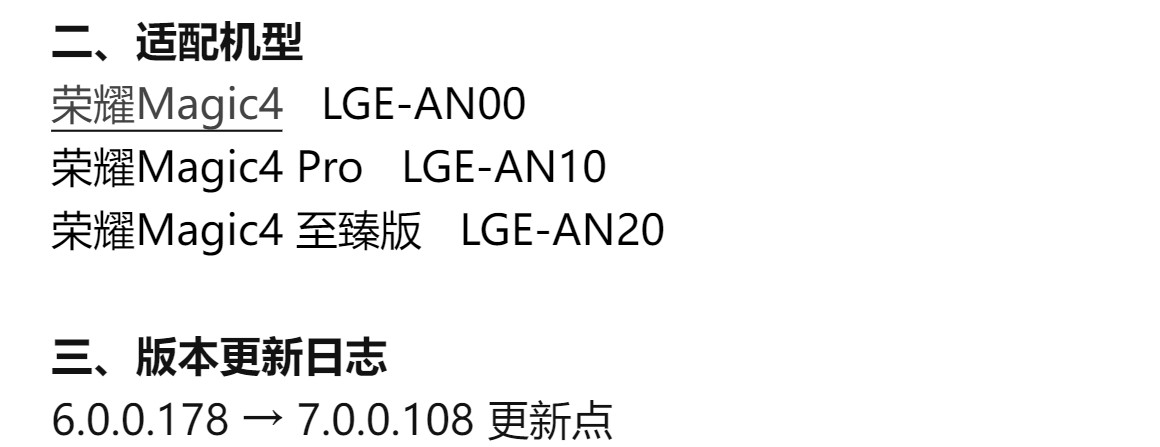
Honor V40:
Honor V40 series is also eligible to download MagicOS 7 closed beta with version 7.0.0.121 users will have to download Magic UI 4.0.0.201 and 205 to participate in the beta activity.
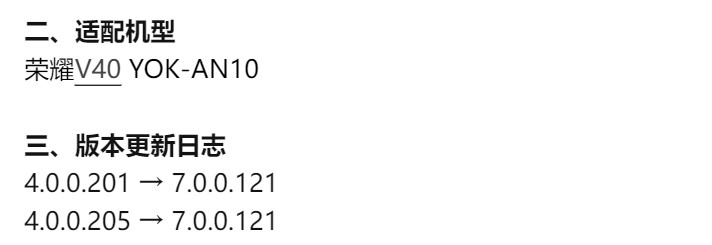
MagicOS 7:
Honor MagicOS 7.0 is a people-centered intelligent interconnection ecosystem, it continues to improve AI Services. The software is also released with a personalized OS, protects privacy and security proactively, and updated the accessibility operation.
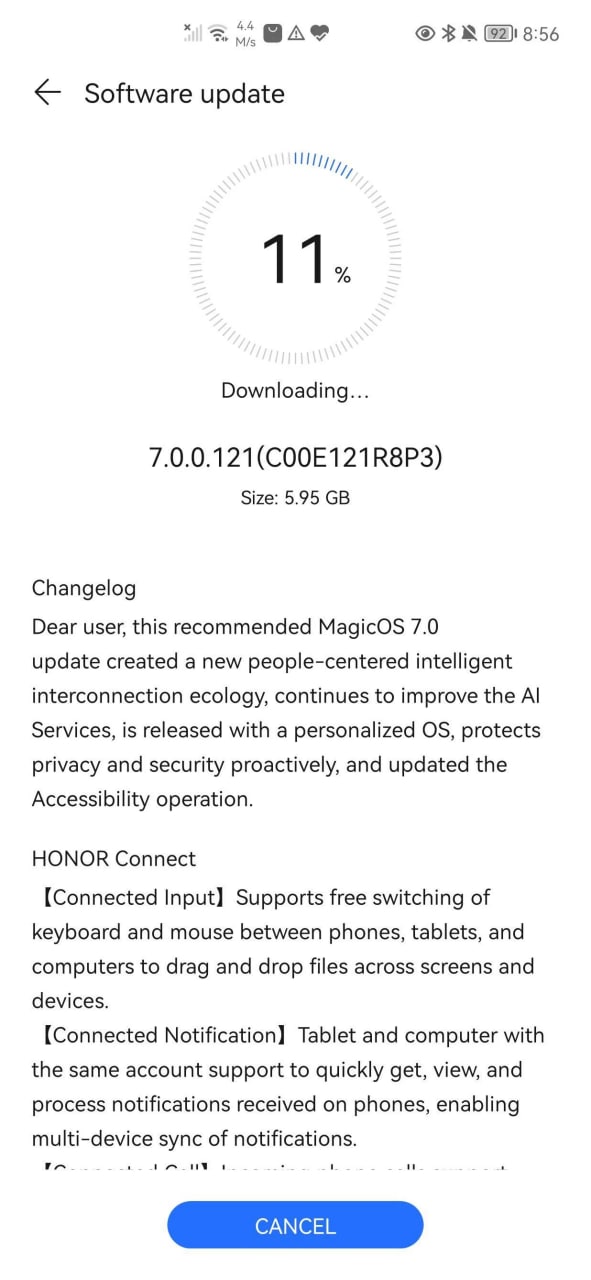
Beta:
It’s noted that the active rollout is spreading as Log and Nolog software packages.
Global:
Currently, Honor is conducting these beta activities in China and it may soon open for global users of these devices.
Notes:
- All of the eligible Honor smartphone owners must have to download the required firmware version before upgrading to MagicOS 7 closed beta.
- During the closed beta testing, users are recommended to join the software user experience improvement program. You can report or suggest features to support closed beta testing environments.
- This software update won’t erase your data but it’s recommended for you to make a backup of important files.
- Users are suggested to update system apps to meet the compatibility.

